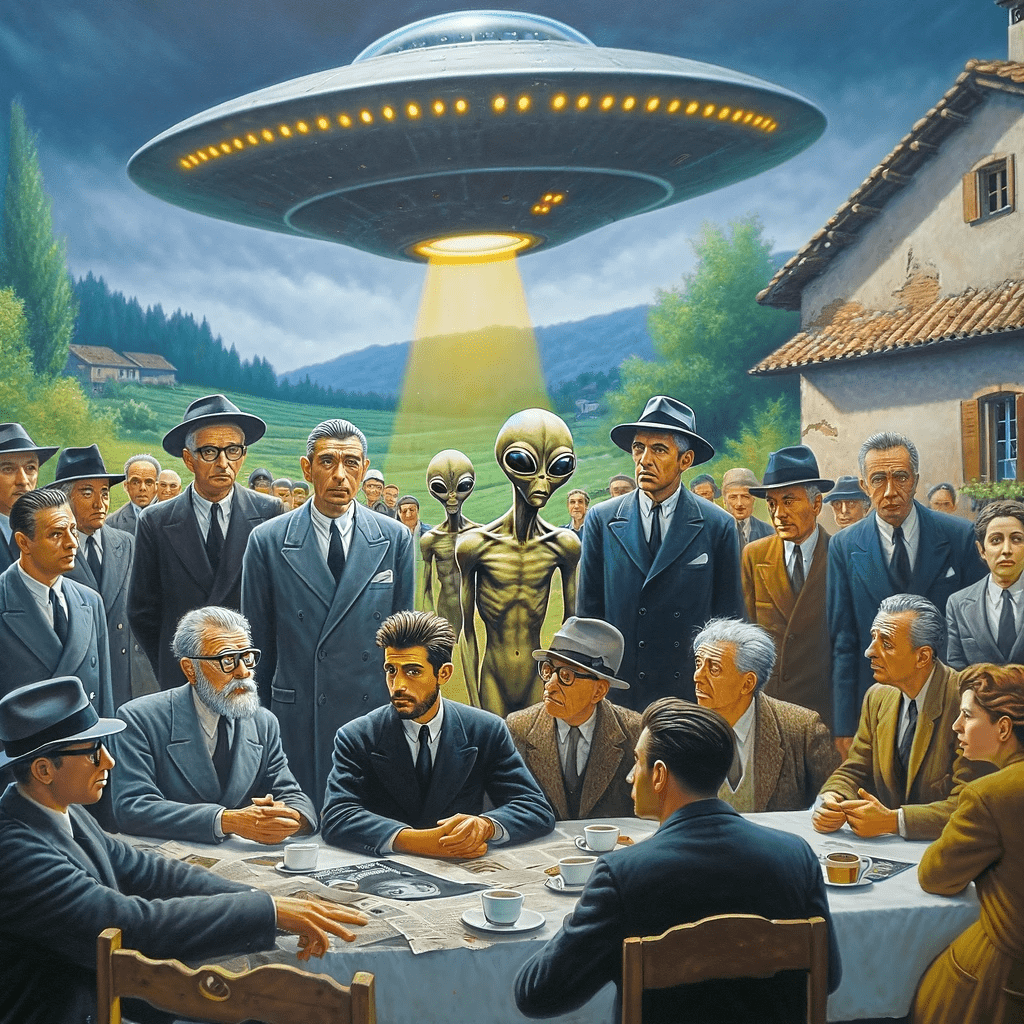Amicizia Case (1956)

The Amicizia case, known as “Friendship” in English, is an extraordinary account of alleged contact between humans and a federation of alien races, referred to as the W56. The story began in 1956 in Italy, where a group of extraterrestrial beings supposedly initiated communication with various individuals, including scientists, researchers, and intellectuals. The W56 claimed to be engaged in their own cosmic battles against other alien races, while simultaneously striving to protect Earth from the CTR, a race they had created through a failed experiment. A central aspect of their mission was to help humanity overcome its propensity for violence and self-destruction. In order to continue their efforts, the W56 required resources such as strontium, barium nitrate, and fruit, as well as financial support from their human contacts.
- Strontium is a chemical element with the symbol Sr and atomic number 38. It is a soft, silvery-white alkaline earth metal that is chemically similar to calcium, and it occurs naturally in minerals like celestine and strontianite. Strontium has various uses, including in the production of glass for color television picture tubes, as a component in fireworks and flares to produce bright red colors, and in small amounts as a treatment for osteoporosis, as it can help increase bone density.
- Barium nitrate, on the other hand, is an inorganic compound with the chemical formula Ba(NO3)2. It is a white, crystalline solid that is highly soluble in water. Barium nitrate is primarily used as an oxidizer in the production of fireworks and pyrotechnics to create bright green colors. It is also utilized in the manufacture of some types of glass, ceramics, and in the production of barium oxide, which is used as a coating for cathode ray tubes and other electronic devices. Additionally, barium nitrate is used as a precursor in the production of other barium compounds.
One of the main proponents of the Amicizia case is Stefano Breccia, an Italian university professor who collected testimonies from around 80 contactees and published books on the subject, including “Mass Contacts” (2009). Breccia’s work documents the experiences of those who allegedly interacted with the W56, providing detailed accounts of their encounters and the knowledge imparted by these extraterrestrial beings. In his books, Breccia cites various sources to support the claims, including some photographs of alleged W56 aliens and accounts from reputable individuals such as Bruno Sammaciccia, a historian who claimed to have met these beings.
A photograph of an alleged W56 alien, purportedly standing 10 feet tall, was taken by historian Bruno Sammaciccia. This image has been used to support the existence of the extraterrestrial beings involved in the Amicizia case (source: Stefano Breccia, “Mass Contacts”).
The W56 aliens allegedly provided knowledge on advanced technologies, including propulsion systems, energy production, and even medical treatments. Some contactees claim that this information has been utilized to develop real-life innovations (source: Stefano Breccia, “Mass Contacts”).
The story of the Amicizia case has been covered by various Italian newspapers, such as “Il Giornale dei Misteri,” which published an article in 2007 detailing the history of the case and the experiences of those involved (source: “Il Giornale dei Misteri,” 2007).
Some researchers, such as Timothy Good, author of “Earth: An Alien Enterprise” (2013), have mentioned the Amicizia case as an example of contact between humans and extraterrestrial beings. Good’s book explores the idea that advanced extraterrestrial races have been collaborating with humans for decades, sharing knowledge and technologies to help us advance as a species.
The W56 aliens were often described as humanoid in appearance, with some resembling humans more closely than others. Some contactees described the beings as tall, with heights reaching up to 10 feet or more, while others claimed that they were of a more average human height.
The W56 aliens were said to have large, almond-shaped eyes, which is a feature commonly reported in many alleged extraterrestrial encounters. Some contactees also mentioned that the beings had slightly elongated heads and slender bodies. Their skin color and texture varied among the reports, with some describing them as having a pale or grayish complexion, while others mentioned a more human-like skin tone.
The Italian newspaper “Il Giornale dei Misteri” published an article in 2007 that recounted the history of the case, as well as the experiences of the contactees involved. This coverage helped to bring the Amicizia case to a wider audience and sparked further debate on the possibility of extraterrestrial contact.

